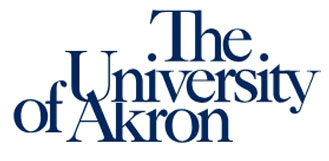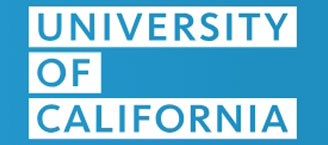BOC Sciences, as a global leader in antibody-drug conjugate (ADC) research and manufacturing services, focuses on providing biopharmaceutical clients with comprehensive and high-quality custom synthesis solutions for ADCs. With extensive scientific experience, a strong technical team, and advanced production facilities, we are committed to delivering safe, stable, and efficient cysteine-conjugated ADC products to accelerate and ensure the success of targeted drug development.
Cysteine is a sulfur-containing natural amino acid commonly found in protein structures and plays a critical role in the formation of disulfide bonds in antibodies. The typical number and location of disulfide bonds in antibodies are relatively fixed, making cysteine an ideal conjugation site. In ADCs, antibodies undergo disulfide bond reduction to expose free thiol (–SH) groups from cysteine residues that originally connected the antibody heavy and light chains. Subsequently, linkers bearing reactive groups form covalent bonds with cytotoxic drugs, selectively coupling with the free cysteine thiol groups to create stable covalent connections, ultimately producing ADCs.
By reducing specific disulfide bonds within the antibody to expose cysteines, conjugation sites are controllable and relatively uniform, which helps achieve a narrow drug-to-antibody ratio distribution and high batch-to-batch consistency.
Under mild reduction conditions, the tertiary structure and antigen-binding capability of the antibody are maintained, ensuring the targeting ability of the ADC.
Thioether bonds formed between cysteine thiols and linkers such as maleimides exhibit excellent in vivo stability, preventing premature drug release during blood circulation and increasing the therapeutic window of the ADC.
Many FDA-approved ADCs on the market adopt cysteine conjugation technology, which features a mature manufacturing process that is readily scalable for industrial production.
In ADC development, cysteine conjugation technology has become one of the mainstream approaches due to its high specificity and robust stability. BOC Sciences has deep expertise in this field and offers rigorous reduction strategies and diverse conjugation techniques tailored to different antibody subtypes (such as IgG1, IgG2, IgG4) and client-specific needs, ensuring efficient and stable subsequent conjugation reactions.
Currently, ADC development often utilizes inter-chain disulfide cysteines as conjugation sites. For instance, four (IgG1 and IgG4) or six (IgG2) inter-chain disulfide bonds are reduced using excess reducing agents such as hydrogen phosphate or dithiothreitol. This approach avoids breaking intrachain disulfide bonds and exposes sulfhydryl groups from cysteine residues involved in inter-chain disulfide bonds. However, this method produces heterogeneous ADC products with DAR values of 0, 2, 4, 6, 8, 10, and 12. With years of experience in inter-chain cysteine conjugation, our technical team can effectively control DAR and product uniformity to shorten research timelines for our clients.
With advances in genetic engineering and site-specific conjugation technologies, reactive amino acid groups can be introduced into antibodies to site-specifically conjugate toxins via amino or sulfhydryl groups, achieving precise DAR control and product uniformity. For example, ThioMab technology enables desired site-selectivity and uniform modification by utilizing engineered reactive cysteines that do not interfere with structural disulfide bonds. BOC Sciences can support your project by producing ADCs with a single DAR value through these innovative site-specific conjugation techniques.
Bridging conjugation technologies reconnect four pairs of inter-chain disulfide bonds via linkers, restoring the opened disulfide bonds. This approach enables ADCs with relatively high DAR values and fixed conjugation positions. It also preserves intrachain disulfide bonds, enhancing ADC stability. Bridging-conjugated ADCs maintain high antigen-binding capacity, plasma stability, and antigen-selectivity to induce cell death both in vitro and in vivo. With our extensive linker development library, BOC Sciences provides clients access to cutting-edge inter-chain cysteine bridging conjugation technologies.
BOC Sciences has built an advanced ADC development platform dedicated to supporting cysteine conjugation technology across the entire workflow—from designing antibody disulfide bond reduction strategies, synthesizing linkers and payloads, optimizing conjugation processes, to product purification and quality analysis. Our platform, equipped with state-of-the-art instruments and a skilled technical team, precisely regulates drug-to-antibody ratios (DAR) and product uniformity to meet client demands in exploratory research, preclinical development, and cGMP manufacturing.
BOC Sciences brings together senior experts in biochemistry, medicinal chemistry, and bioengineering, with extensive experience in ADC design and synthesis. Our team understands every detail of cysteine conjugation technology and provides personalized solutions to meet client needs.
Equipped with advanced analytical instruments (mass spectrometry, HPLC, SEC, DSC, etc.) and high-throughput reaction systems, we support rapid screening and optimization of various conjugation strategies, ensuring product quality meets international standards.
With robust antibody engineering technologies and a wide range of mainstream and innovative payload resources, we provide end-to-end services from early-stage research to preclinical-scale development.
Through accurate disulfide bond reduction, we expose a specific number of cysteine residues to precisely regulate DAR, minimizing conjugation heterogeneity and enhancing ADC stability and efficacy.
Using efficient and stable maleimide and derivative linker technologies, we ensure conjugate stability in blood circulation, reducing nonspecific drug release and improving tumor targeting.
Our optimized reduction and conjugation processes preserve antibody tertiary structure and antigen-binding capabilities, ensuring ADCs maintain excellent targeting properties.
Established according to ISO and cGMP standards, our quality control system guarantees outstanding performance of cysteine-conjugated ADCs in terms of purity, uniformity, and stability, ensuring every batch meets client expectations.
From project initiation to delivery, we assign dedicated project managers to provide full communication and coordination, ensuring transparency, fast response times, and timely support throughout all stages of development.

In-depth communication to understand client requirements, assess antibody disulfide bond structure, payload selection, and target DAR, develop a personalized conjugation plan, define timelines and delivery standards, ensuring smooth project initiation.
Select the most suitable reducing agent and process parameters based on antibody subtype; optimize reduction conditions through small-scale experiments to precisely expose cysteine sites while preserving antibody structural integrity and bioactivity.
Synthesize or procure high-purity linkers and cytotoxins; perform efficient pre-conjugation of linker and payload to form active intermediates, preparing for subsequent antibody conjugation.
Conduct antibody conjugation under strictly controlled pH, temperature, and reaction time; monitor DAR values and reaction progress in real time; optimize processes to obtain ADC products with high uniformity and stability.
Use multi-stage purification methods including affinity chromatography, ion exchange, and size exclusion chromatography; comprehensively test DAR, purity, antibody binding activity, and safety indicators to ensure products meet high-quality standards.

Smoothly scale up optimized processes to pilot or cGMP production scale; verify batch consistency and stability; provide packaging, cold chain logistics, and technical support to guarantee on-time delivery to clients.
Cysteine conjugate base refers to the anionic form of cysteine after proton loss (deprotonation), commonly present under basic conditions. In this form, the cysteine thiol group (–S⁻) exhibits higher nucleophilicity, making it more reactive with electrophilic linkers such as maleimides. In ADC development, controlling pH to form the cysteine conjugate base is key to improving conjugation efficiency.
Cysteine maleimide conjugation is a widely used ADC conjugation method that reacts maleimide linkers with thiol groups on antibody cysteine residues to form stable thioether bonds. This method offers high selectivity and mild reaction conditions, enabling precise DAR control. BOC Sciences has extensive experience in this field and can support high-purity, high-uniformity ADC production.
π-clamp mediated cysteine conjugation is a novel site-specific conjugation technology that utilizes π-clamp sequences (rich in aromatic amino acids) engineered on antibodies to promote highly selective conjugation with cysteine residues. This approach achieves single-site modification, improving ADC product uniformity and stability, and is suitable for next-generation precision ADC development.
Cysteine Conjugation targets cysteine sites exposed by antibody disulfide bond reduction, resulting in higher site selectivity and better product uniformity. In contrast, lysine conjugation randomly modifies lysine residues, producing heterogeneous DAR distributions. BOC Sciences can recommend the optimal conjugation strategy based on project requirements.
Yes. We offer antibody genetic engineering services to introduce cysteine residues at specific antibody sites for site-specific conjugation, ensuring high uniformity and controllable ADC products.
Most IgG antibodies (such as IgG1, IgG2, IgG4) are compatible but require evaluation of their disulfide bond structures and stability. BOC Sciences provides preliminary technical assessment to confirm antibody suitability for this conjugation strategy.
By optimizing antibody reduction level, linker concentration, and conjugation reaction conditions, BOC Sciences can precisely adjust DAR values to fixed loading levels such as 0, 2, 4, or 6, meeting diverse clinical and process requirements.
From cytotoxin synthesis to linker design, discover our specialized services that complement your ADC projects.
Find exactly what your project needs from our expanded range of ADCs, offering flexible options to fit your timelines and goals.
Contact our experts today for pricing and comprehensive details on our ADC offerings.










